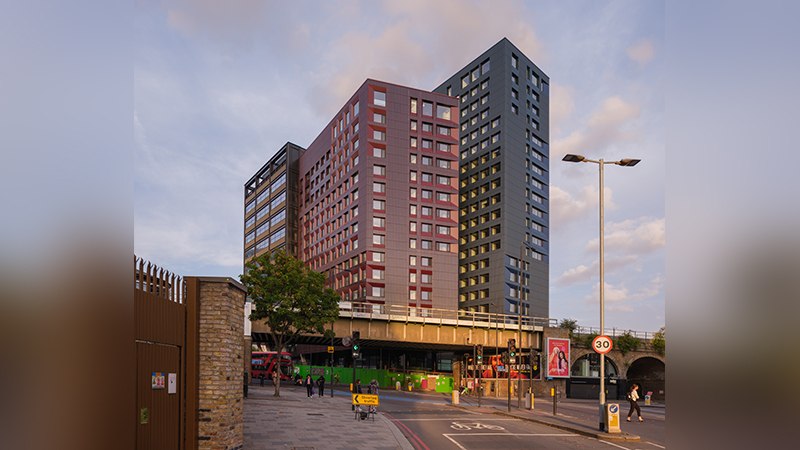The Bank of Ireland’s decision to call in receivers over a residential development close to the Olympic Park, the same day as making a formal demand for £40m against Irish developers Thomas and Conal McFeely, has been backed by the High Court.
Asplin J rejected a claim advanced by the McFeely brothers and the owner of the property, Ashwood Enterprises, that a third party legal charge over it did not secure the extent of borrowings alleged by the bank, and that the appointment of receivers was invalid in any event because it was carried out by the bank as agent for the National Asset Management Agency of Ireland (NAMA).
It is the second time a dispute over Athena Court, a block of apartments at 160–188 High Street, Stratford, East London, has reached the High Court.
In 2012, Peter Smith J found that lettings agent, Filtons Ltd were “in thrall to the McFeely brothers” and had entered into a “sham” lease of the premises, which led to the receivers’ access being obstructed. The judge made an order for possession in favour of the receivers, and subsequently appointed them as court-appointed receivers.
These proceedings centred on the bank’s decision, in November 2011, to make a formal demand against the McFeelys in the sum of £39,349,640 – under the third party legal charge (TPLC) made in 2007 – and to appoint receivers over the property.
The demand related to an initial £27m loan facility to McFeely company Inis Developments, through which the TPLC came into effect, as well as a further loan of £6m to Inis in December 2008 and an overdraft facility arranged in 2010. No demand was made at that point in respect of an additional £10m loan facility in May 2008.
The McFeelys claimed that the TPLC was restricted and only applied to the initial £27m loan facility, but rejecting that argument, the judge said that the reasonable person, with all necessary background knowledge, would, in the light of the TPLC’s unambiguous terms, have “understood the parties to have intended the TPLC to extend to further advances made by the bank to Inis and to all its liabilities to the bank and not to confine them to the £27m facility”.
She rejected an additional claim that the bank had given collateral warranty or had otherwise agreed that the TPLC was limited to securing the £27m, and found that there was “no agency” in the manner in which the bank had acted.
Though the demand and appointment of receivers was made at the direction of NAMA, to which the loans were transferred in October 2010, she said that they remained the bank’s acts and so were consistent with the terms of the TPLC.
She added that the bank continued to carry out the ordinary day-to-day functions relating to the facilities, but NAMA made the ultimate decision on actions such as calling in receivers.
The site was bought for almost £12.5m in 2005, and held in the McFeely brothers’ names on trust for Ashwood, which was to carry out the development before Inis was brought into take over for tax reasons. The development was completed in November 2010.
The judge said that, until 2009, the McFeely brothers were highly successful property developers with an estimated net worth of £320m, but added: “However, the rapid decline in property values in Ireland and the worldwide financial crisis left them unable to meet their liabilities to various creditors.”
Ashwood Enterprises Ltd and ors v Governor and Company of the Bank of Ireland and ors
Chancery (Asplin J) 29 July 2014
Hugo Page QC (instructed by St John Law Ltd) for the claimants
Matthew Collings QC and Rosanna Foskett (instructed by Dentons UKMEA LLP) for the defendants










